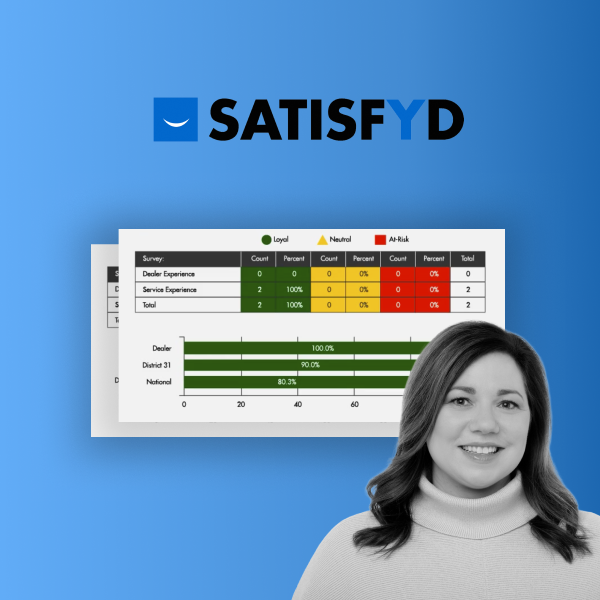Global population is anticipated to exceed a 20% growth within the next decade, and by 2050 there will likely be a need for a 70% increase in food production.
As food production grows, the need to better understand the customer wants, increase efficiency, and stay ahead of the rising demands grow. Food manufacturers must welcome changes in their manufacturing processes to remain relevant and profitable, which means embracing technology advancements and the golden nuggets they produce: data.
BI and Analytics have been around since the '80s. Since then, many industries – including food manufacturing – have adopted data and analytics into their daily business processes. As one of the most critical industries globally, food manufacturing must meet the increasing demand for data analysis. As the food manufacturing industry becomes more integrated with connectivity and software, manufacturing processes will continue to change, relying heavily on BI and Analytics to make business decisions.
But to make better data-driven decisions, the industry needs to adapt to the market trends and demands because the decisions made now will significantly impact a company's success in the future. The future of food manufacturing will include the following market trends:
Trend #1: Data Integration and Analysis
BI and Analytics are not just for finance and sales anymore. Companies have an opportunity to stay ahead of the curve by using data from different business areas to influence future outcomes.
For example, Operational Managers often obtain limited information from their ERP solution, preventing them - and the entire organization - from accessing valuable insights to improve operational business processes. Plant Managers have limited access to the tools they need to get real-time information, so they rely on manual work or rudimentary methods to make daily business decisions. But is this the right approach? Do they have the correct information to make predictions and to improve the efficiency of an operation?
Modern food manufacturers need to consider how BI can be used within their organization to integrate their data for better analysis to create more value.
Trend #2: Forecasting
Whether it is bread production, seafood preparation, meat processing, or any line of the food manufacturing business, they all have one thing in common: variability.
Everything from changes in oil prices, import and export trades and laws, commodity prices, weather, and global pandemics is hard to predict accurately. Still, it's imperative to keep track of all these variables that affect the business.
Maximizing BI and Analytics benefits to quickly and efficiently keep track of all these data in one place can help organizations make better, quantifiable decisions. With improved and strategic planning, manufacturers will obtain a deeper understanding of the supply chain. Using data to anticipate a change, an increase or decrease in demand, and other outside factors gives credibility to forecasting and an advantage over competitors struggling to keep up with technological advances.
Trend #3: Traceability
Traceability isn’t just a buzzword, but a concept that answers the most frequent question consumers ask today: where does my food come from?
According to Gartner, transparency and traceability are a top ten strategic technology trend. The need for operational transparency across the supply chain, business functions, technology, and goods delivery has never been greater. Organizations that can say their processes are fully traceable will have the most opportunities in the future.
Tracking ingredients through the batch/lot number, knowing when goods are moving in the warehouse, monitoring allergens back to a specific food item, identifying contaminated raw material, and many more variables are pretient details that need to be shared throughout the supply chain.
IT technology will play an increasing role in supporting supply chain transparency using technologies such as blockchain and smart packaging
- Gartner
But at the same time, it's too much information to gather, process, and see all at once. It's challenging but not impossible, and that's where BI and Analytics come into play to assist in gathering data and visualization steps.
Trend #4: Sustainability
Environmental consciousness began as a simple campaign to reduce, reuse and recycle. But, now, sustainability goes beyond recycling bottles and eliminating single-use products. There are ethical dilemmas to consider especially when the goal is to feed more people (and animals) with innovation. Manufacturers must be able to think outside the box when solving the problem of feeding an estimated 7.8 billion people.
Within the food manufacturing industry, there is emphasis on less food waste. According to the United Nations, "Globally, around 14 percent of food produced is lost between harvest and retail. Additionally, significant quantities are also wasted in retail and at the consumption level."
Decreasing food waste will enable companies to reduce their footprint throughout- and beyond- the manufacturing process. This will lead to more sustainability, not just within the company, but throughout the world. Automation and BI can help support a more sustainable manufacturing process by marking waste, using fewer ingredients, and utilizing resources more efficiently.
Trend #5: Consumer Journey
Consumers’ behavior is changing, and companies are expected to connect and engage with their customers. Consumers want to know where their food originates, the ingredients, the process by which it was produced, and when. If you can combine all this information from suppliers and throughout the entire manufacturing process (including transport), the traceability data can be used internally across the organization. It can also be used as a marketing strategy aimed at customers to promote awareness and connection. It’s important to analyze the value chain of utilizing the data that can potentially be available.
Before the COVID-19 pandemic, the global manufacturing industry saw significant transformation and growth, and the pandemic's impacts exacerbated the challenges associated with these transitions. Some players relied heavily on online business and e-commerce, which can create significant supply-chain issues. Others temporarily or permanently ceased operations, which affected the competitive landscape.
To Improve is to Change
The success of an organization is determined by its ability to be adaptive to change. It means accepting all the challenges coming its way, being responsive to uncertainty, and thriving despite any circumstance. Now, and in the future, organizations must illustrate an awareness of the delicacy of the entire food manufacturing process and recognize how the strength of data and analytics within the industry is vital to success.
.png)



